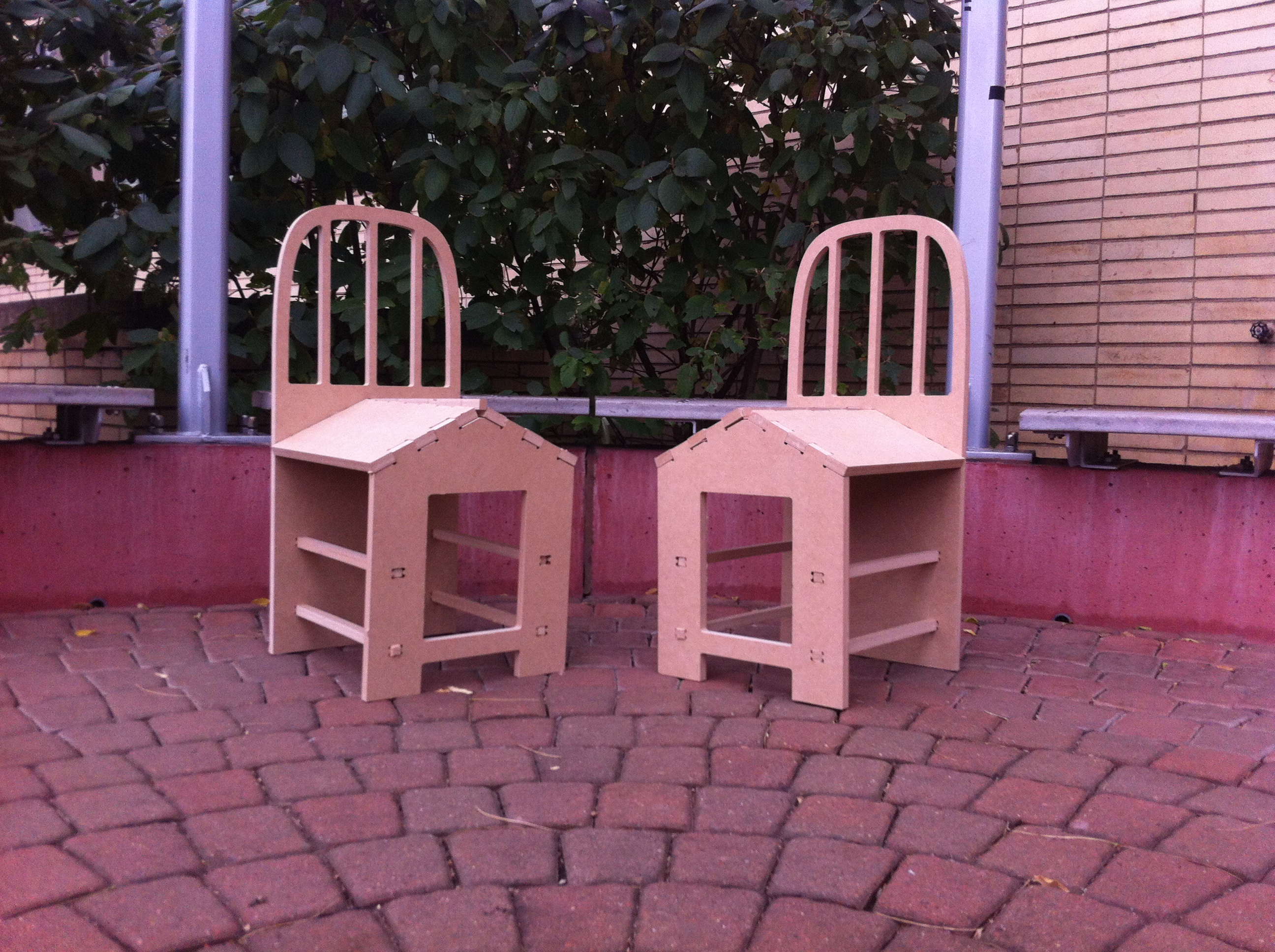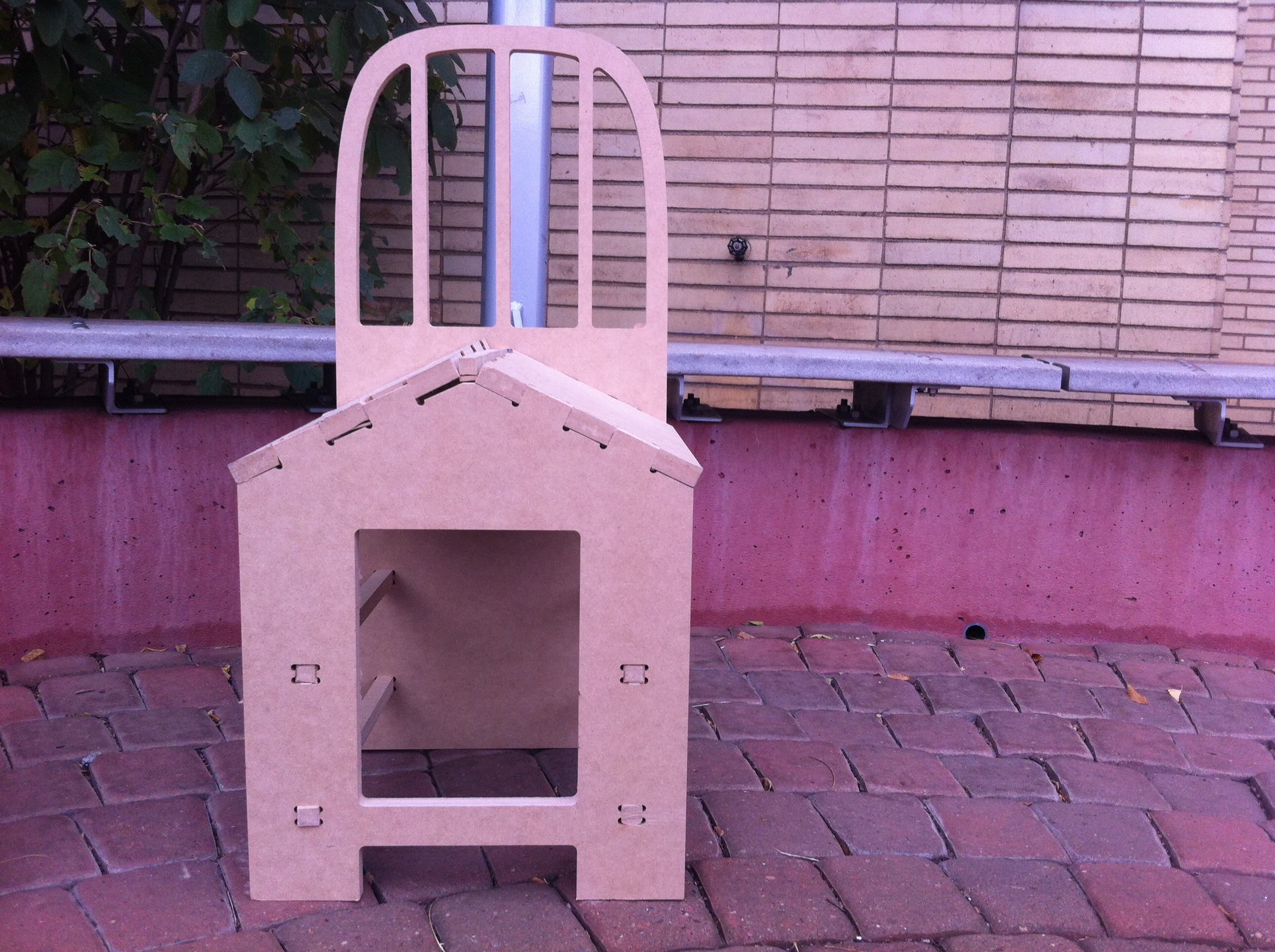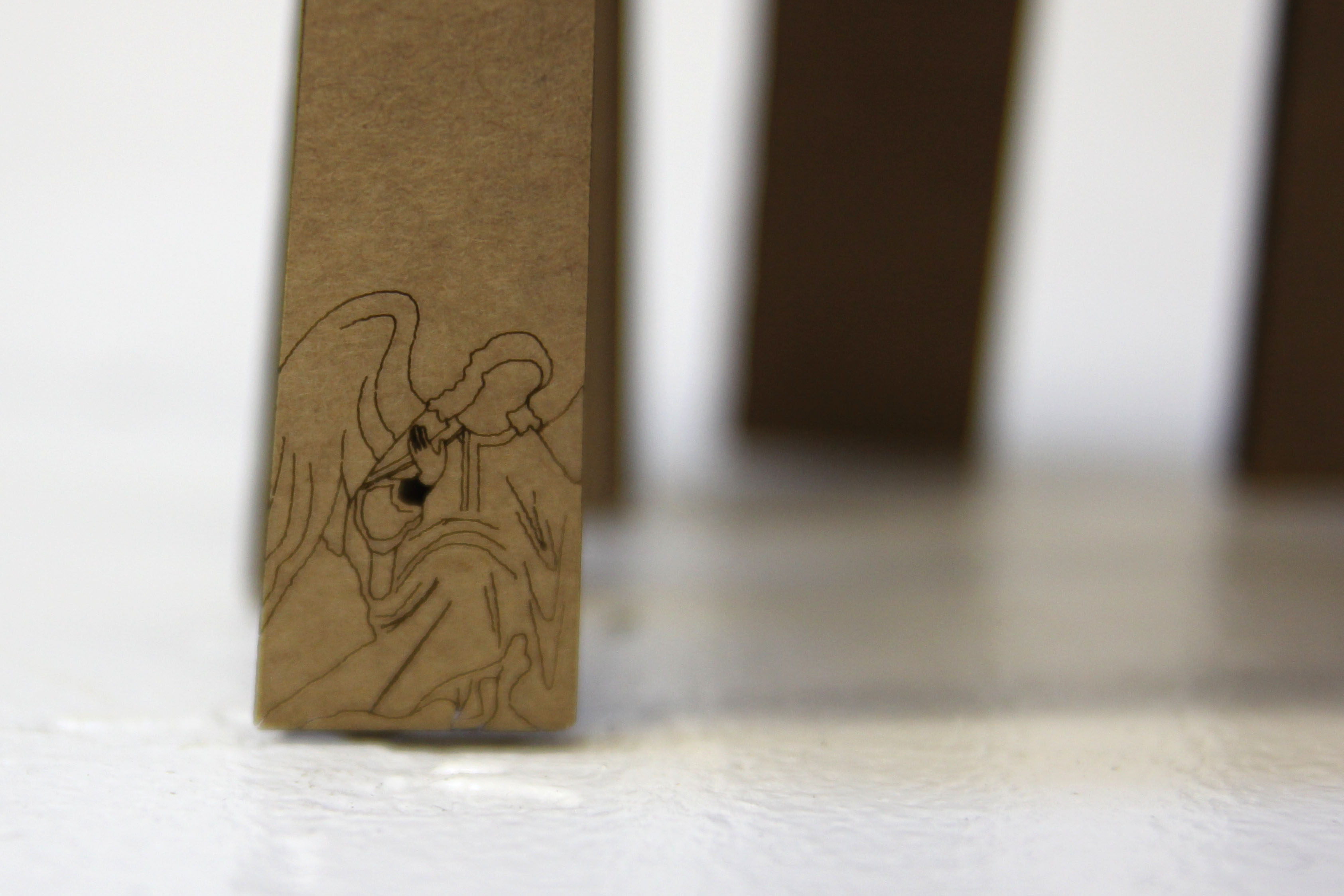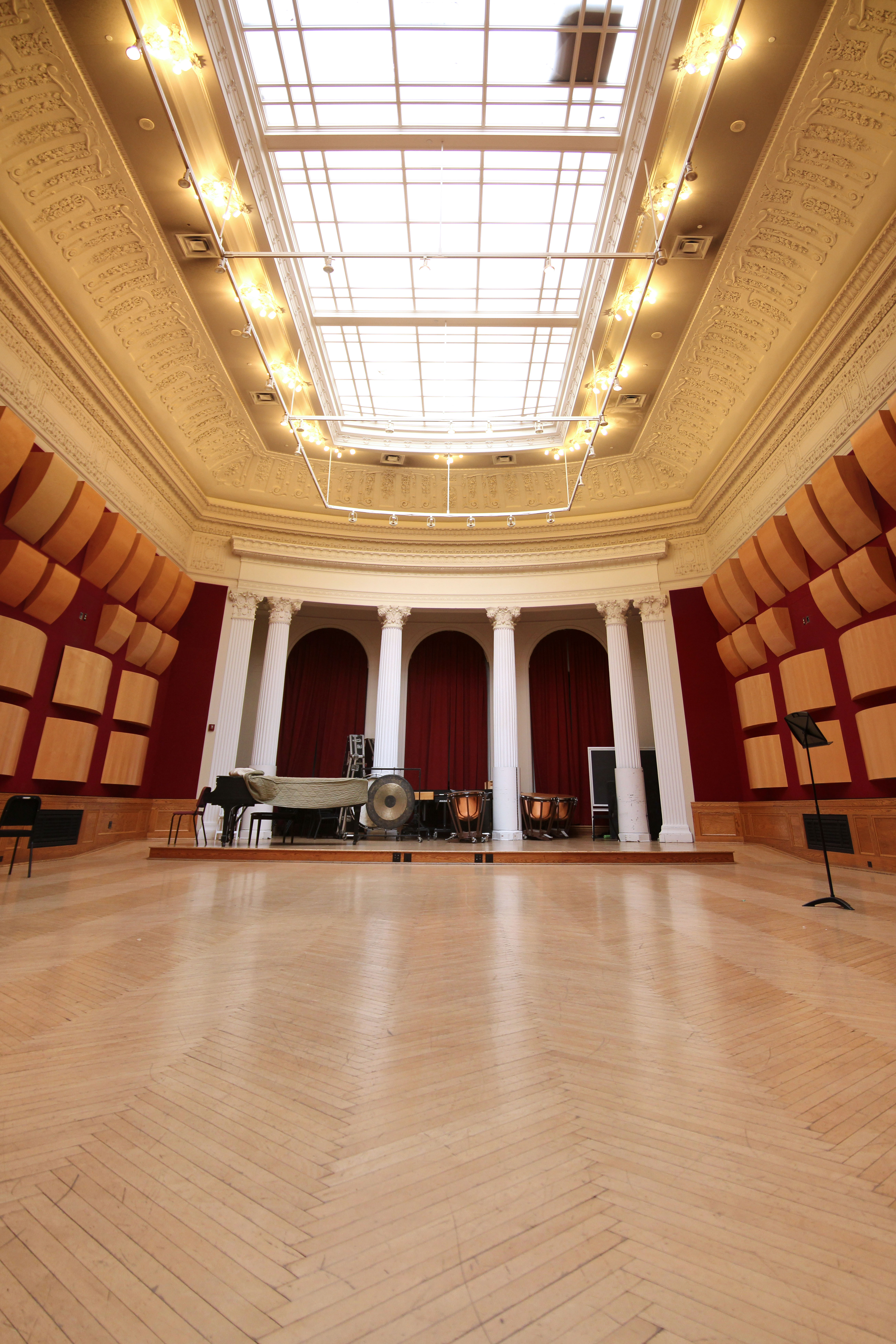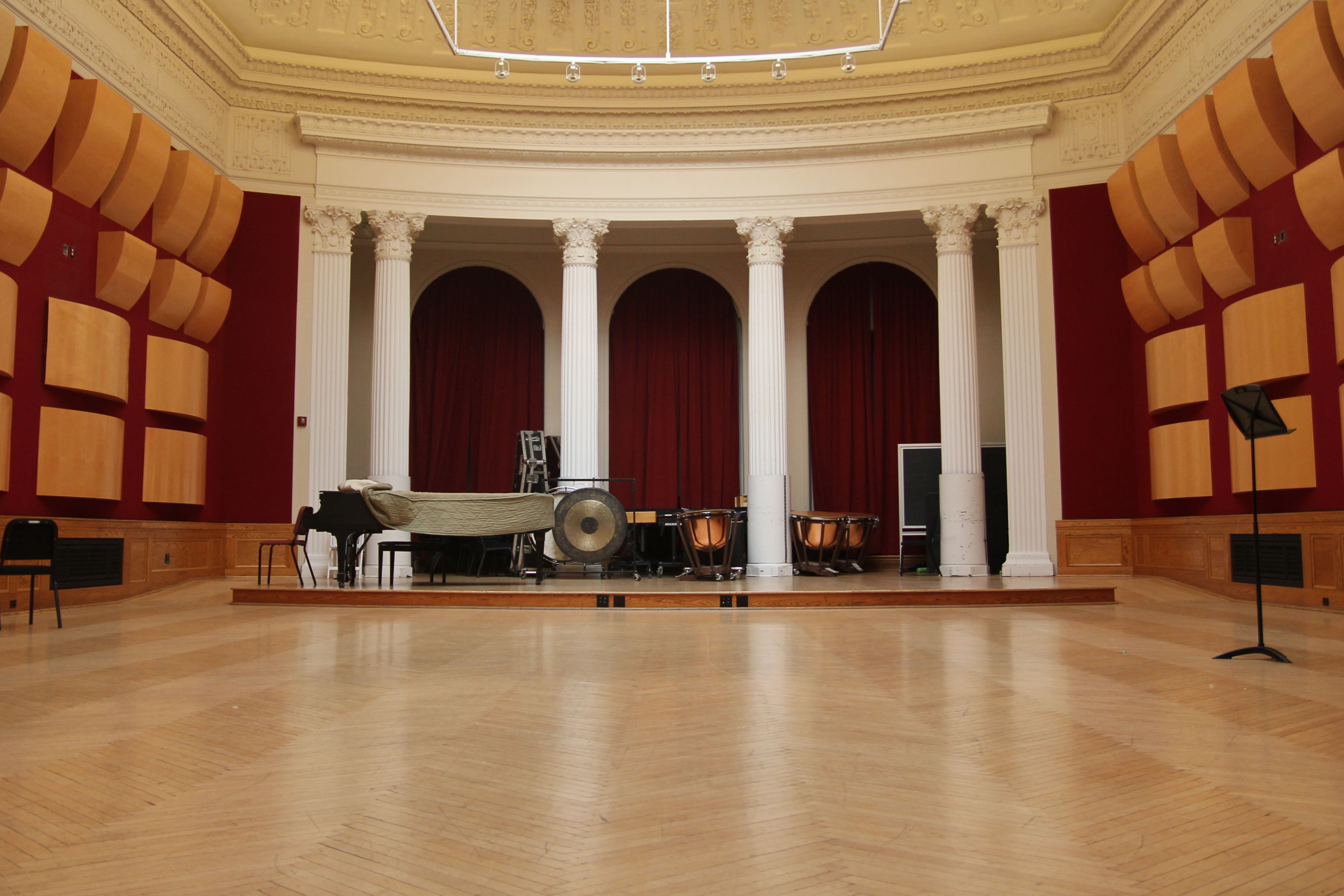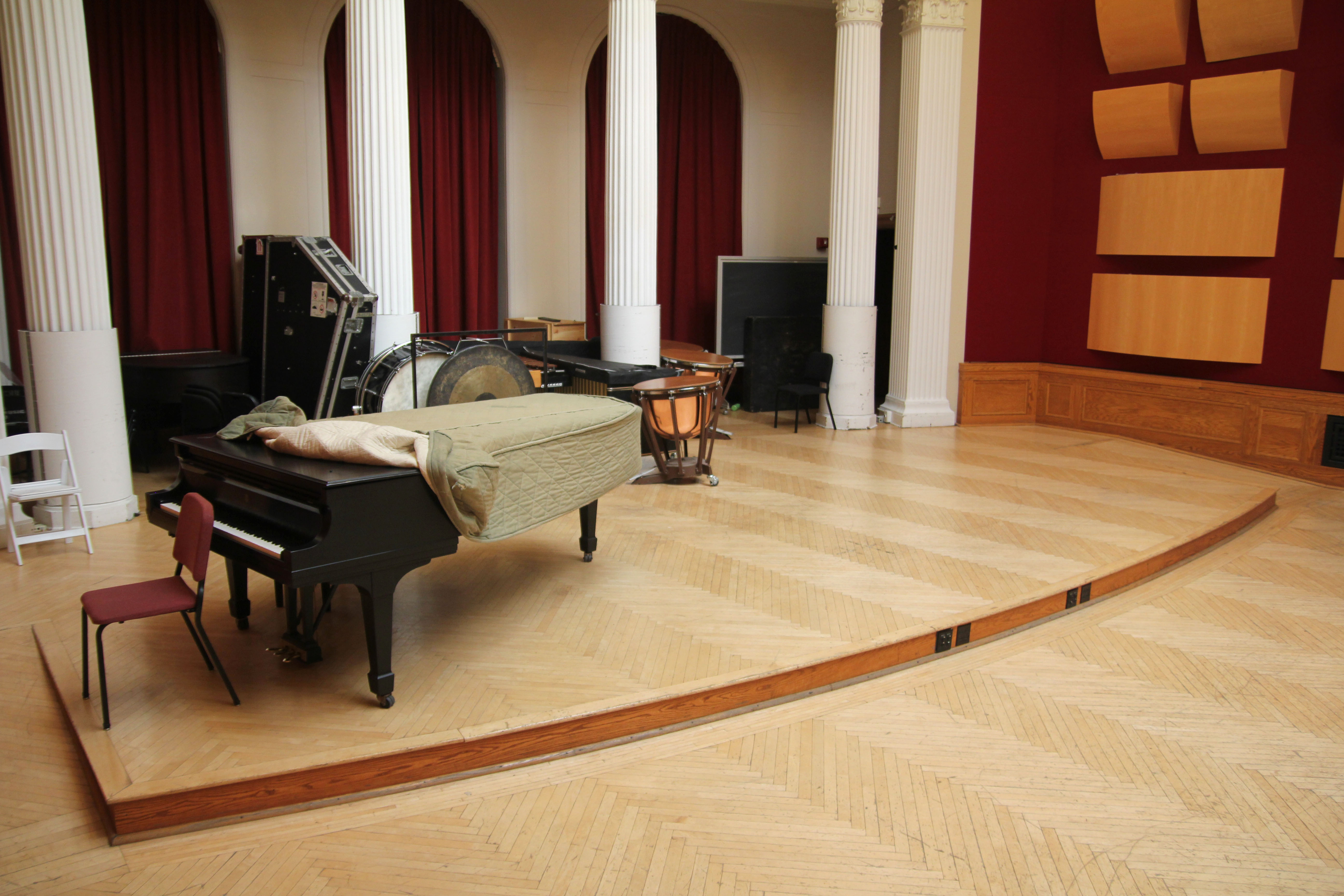
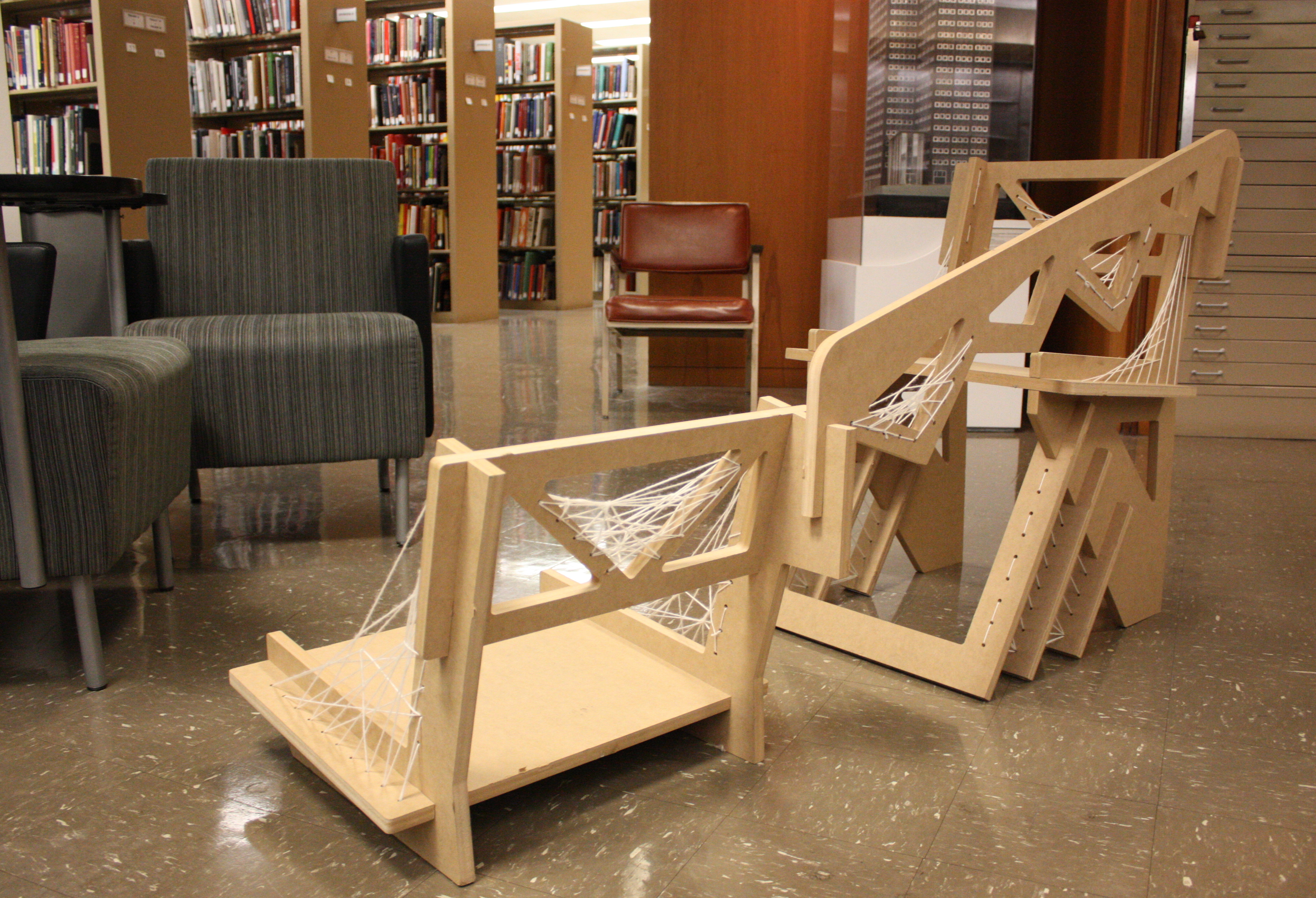
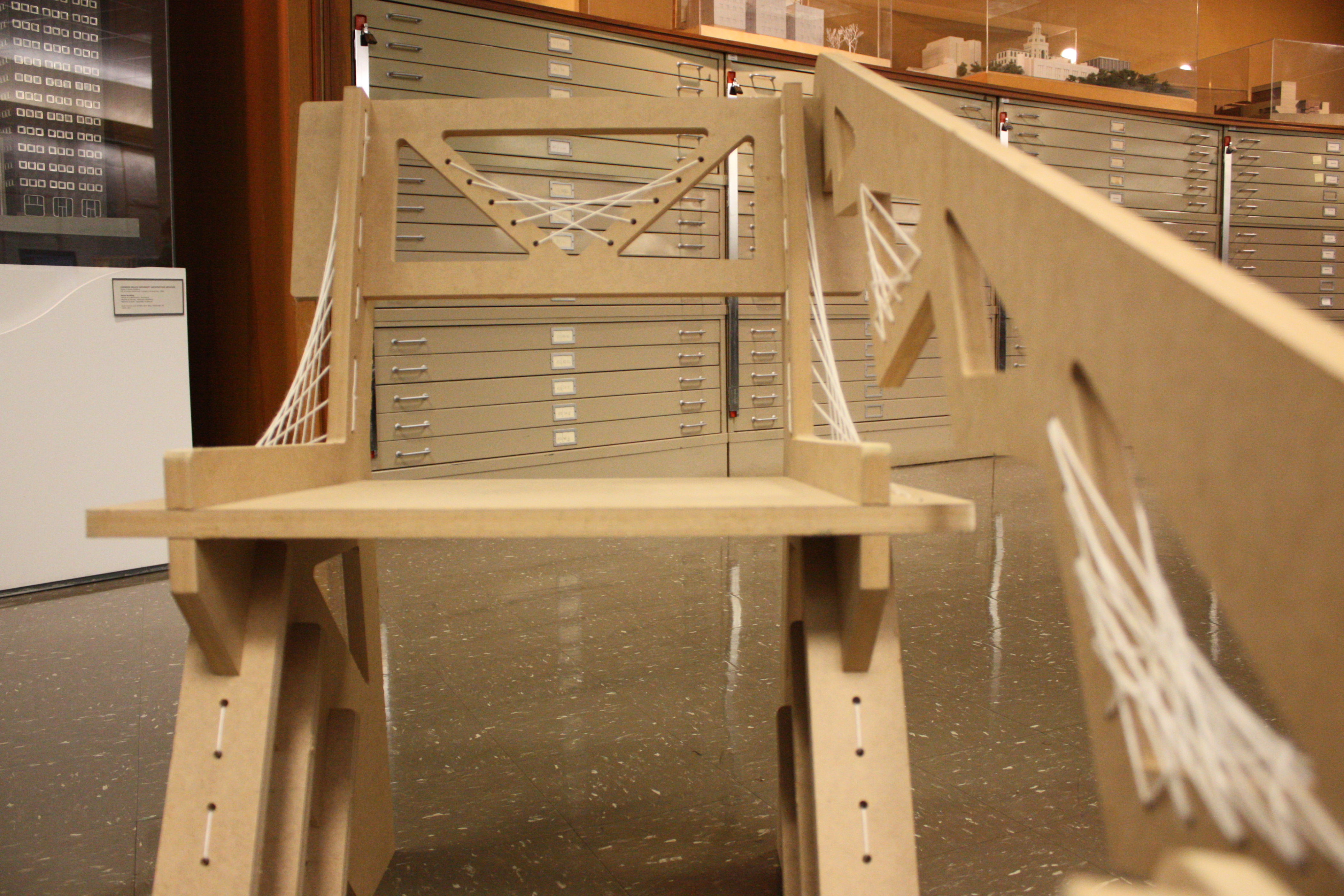



For this iteration of my “two chairs” project, I continued with my concept of a strained relationship between two students working on a project together. I have made several changes however: first, I did away with the small triangular pieces which were originally placed along many of the chairs’ edges. Second, to add interest to the chairs, I used drilling operations to create holes in the chairs through which I wove string, creating webs and curves reminiscent of suspension bridge structures. These references to architecture have lead me to become slightly more specific as to who I envision sitting in these chairs: I now see it as a conversation between two architecture students. Third, and related to this idea that this conversation is between architecture students, I have chosen an installation location that differs from my original plan. The chairs are now placed in the group workspace of Hunt library where many architectural models may be found. I chose to leave my chair unpainted with the bare MDF exposed to reference the architectural prototypes which are often made of similar material.
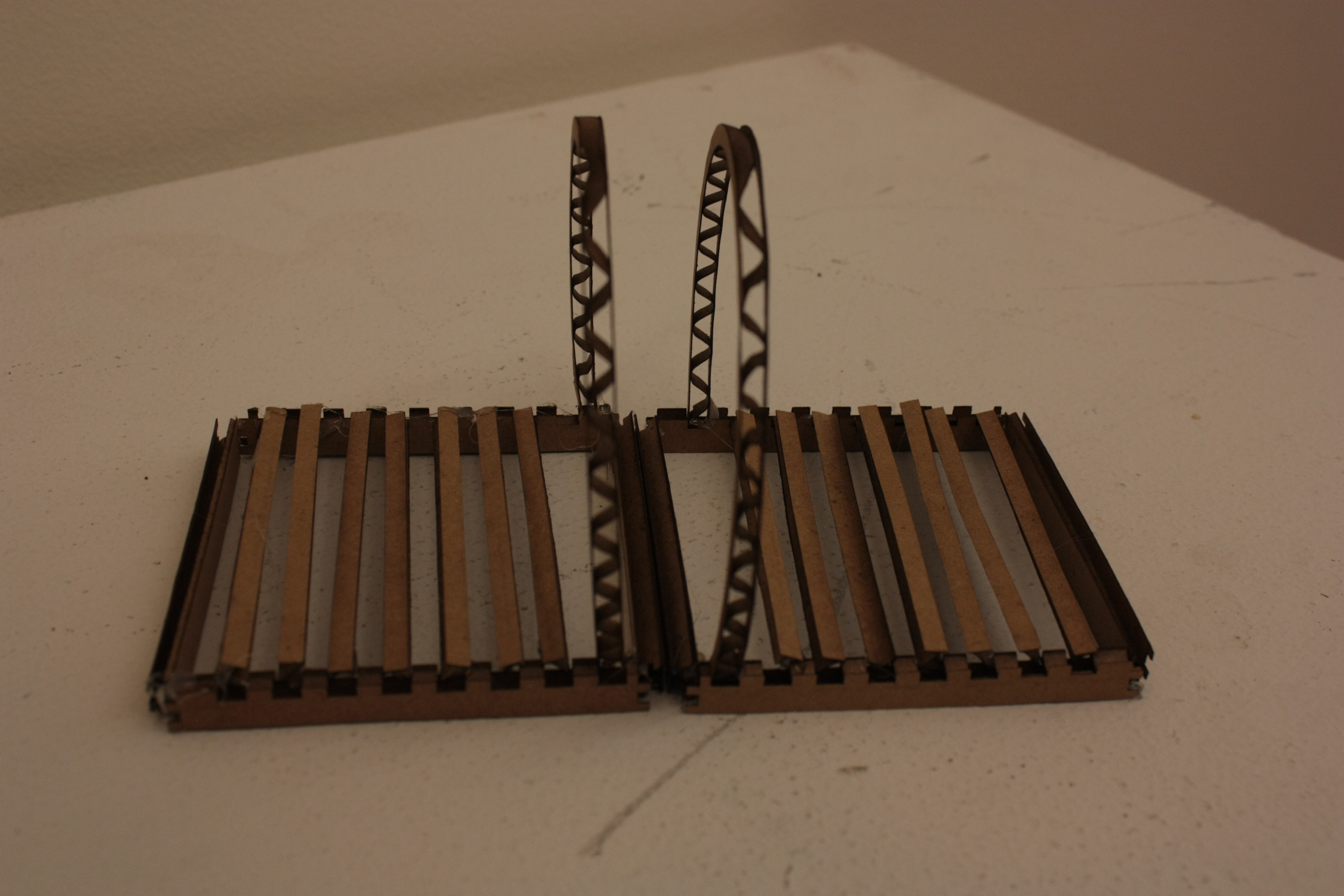
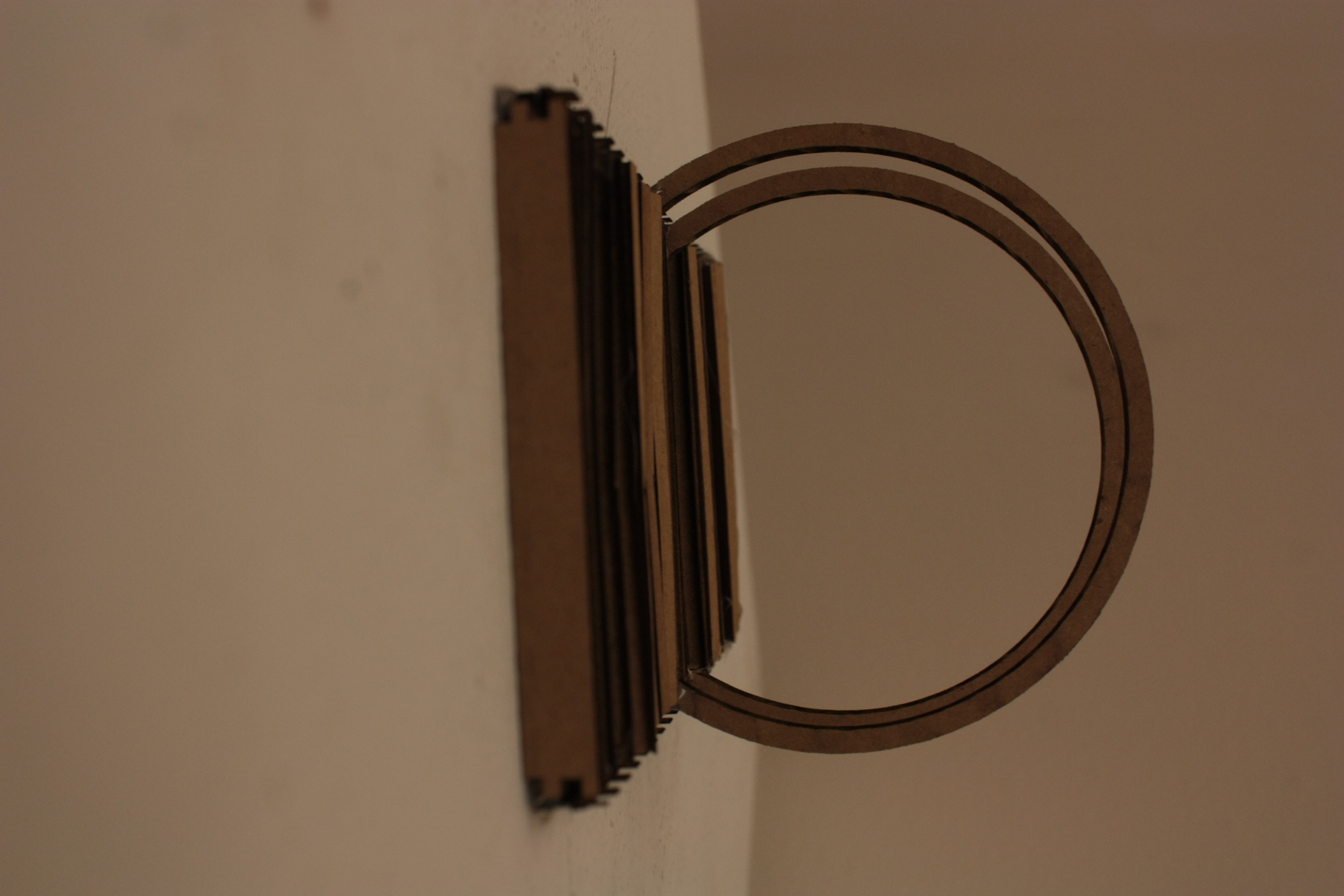
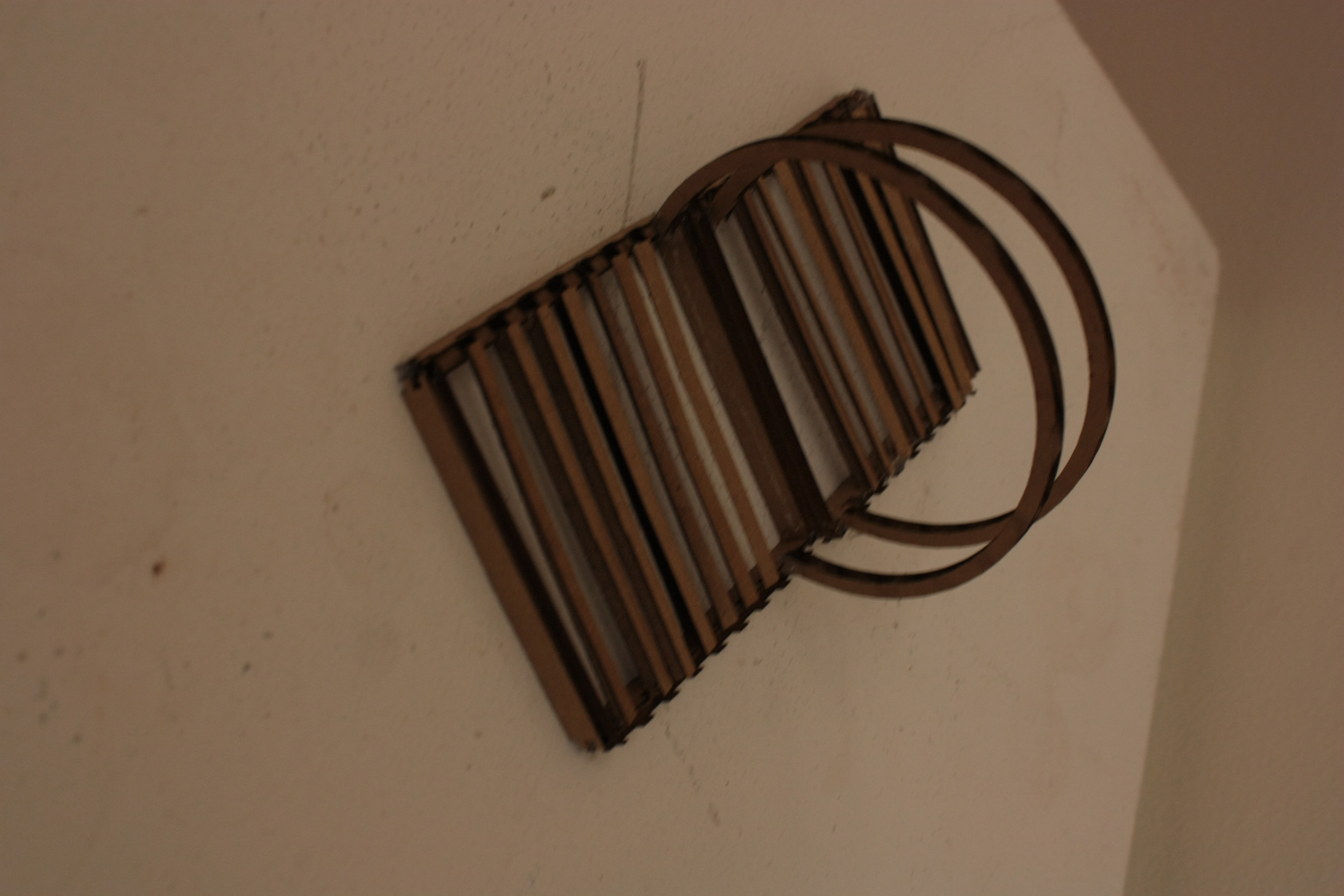
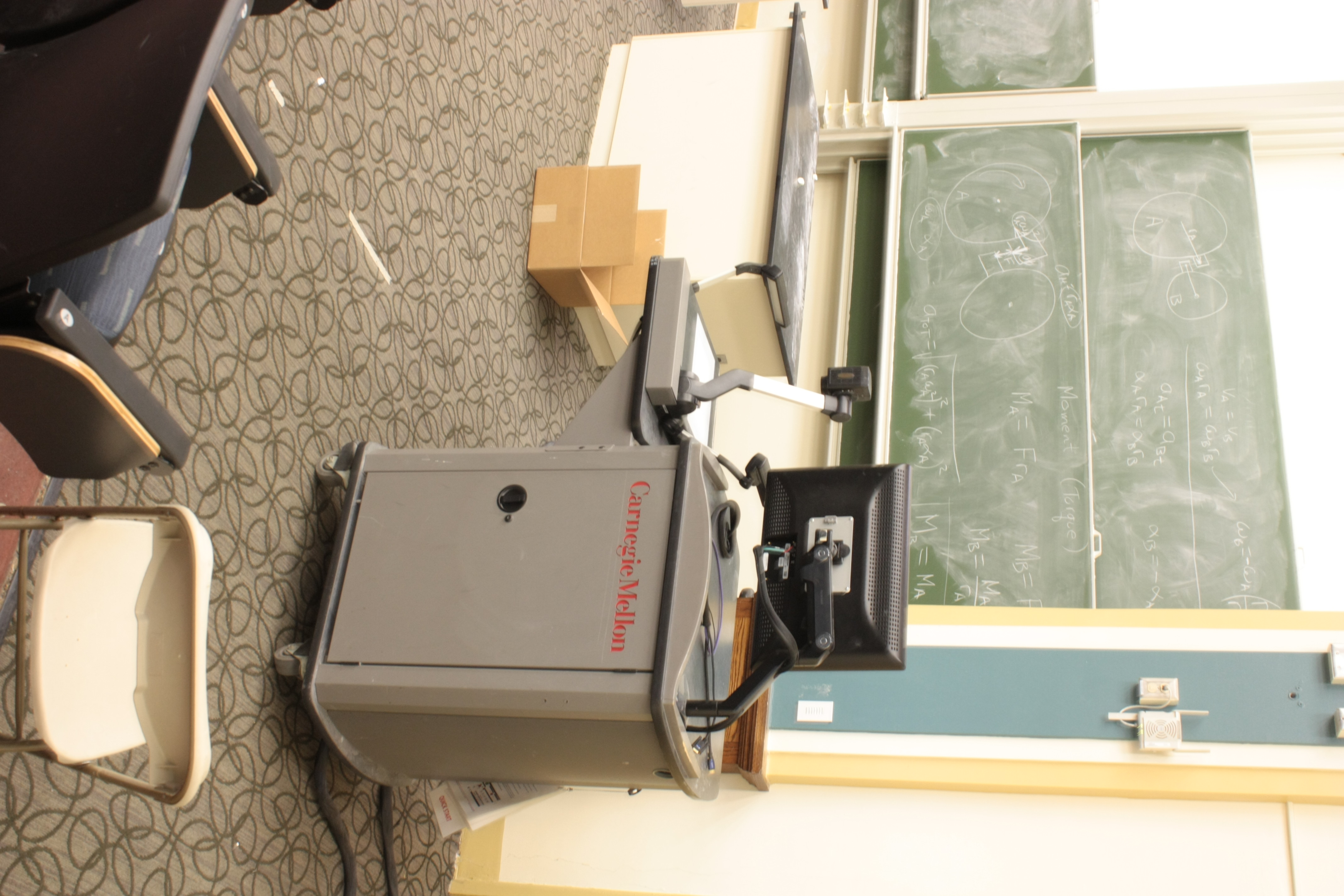
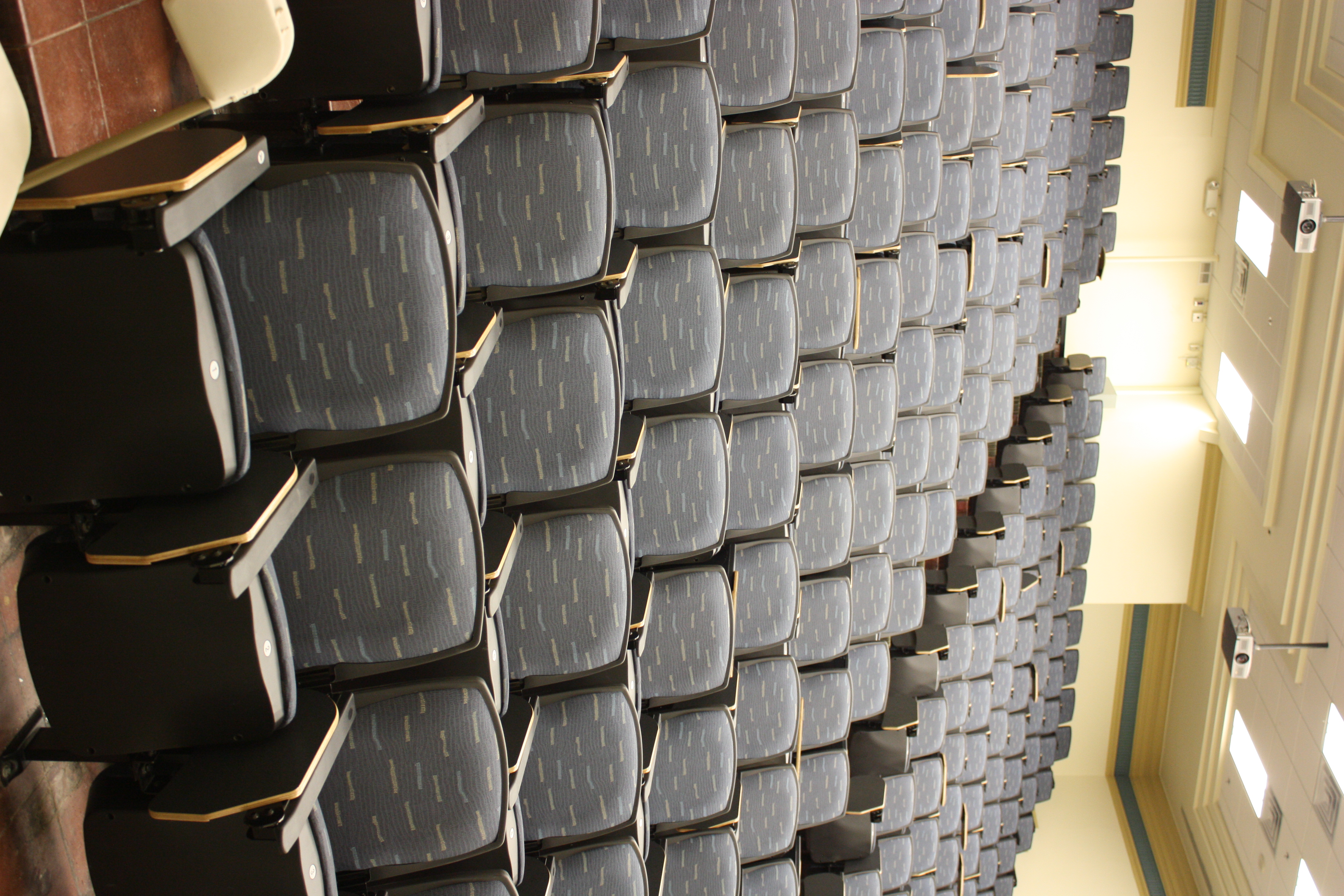

I wanted my conversation to be between Julius Caesar and Brutus. I made one chair with an open circle as the back because I wanted it to symbolize how Julius trusted Brutus. His back was wide open. I wasn’t sure what I wanted to do for Brutus’s chair, but I realized that Brutus himself was the same as Julius. A huge part of the play is the parallelism between Brutus and Caesar, and I wanted to portray that through the same chair. I will be adding people underneath the chair to represent the mob mentality in the play, and I do intend to make that a bit different for Brutus and Caesar.






“Body Talk” describes communication between two people without words, and instead, with the human body. Dance is a form of highly expressive and emotional conversation. It is a type of communication that allows observers to understand the dancers’ conversation without hearing the thoughts of the performers. Their fluid movements embody their thoughts. The changes in distance between the partners, the pace of the dance, the length of the dance, the moves and exaggerations can all be interpreted as an abstract version of talking.
The research behind this project involved browsing through various pictures of contemporary chairs and contemporary dances. I wanted to first find a correlation between the two contemporary topics. One of the interesting modern designs that caught my attention was a chair made of pure perpendicular intersections on a spine.The shape of the chair is created through variations in each thin shape inserted into the spine. Inspired by that idea, I wanted to incorporate it into my design.
The female dancer is portrayed by the chair with a single simple curve, while the male is portrayed by the multiple curved line. For my design, I wanted the seat of the chair have an illusion of floating in midair, similar to the lightness of the dancers they represent.
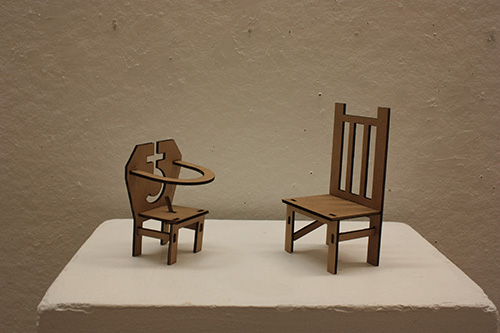
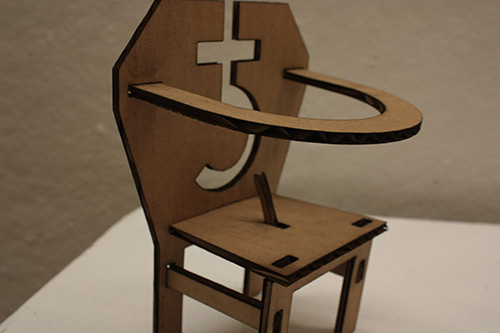
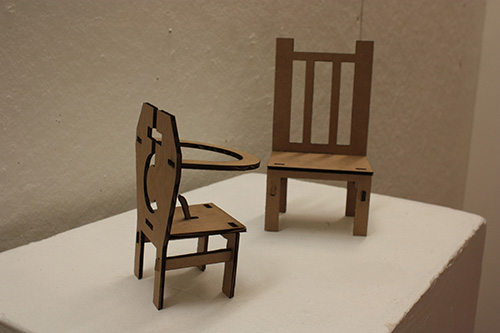
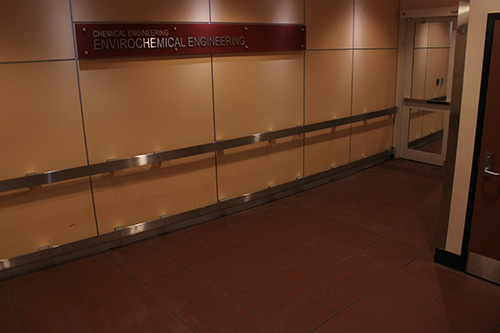
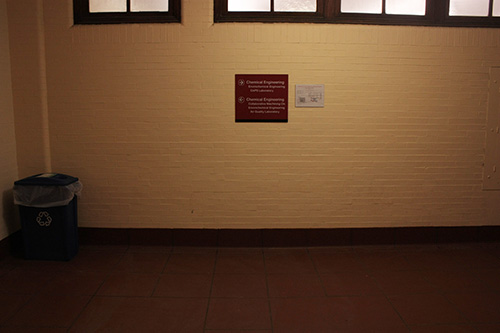
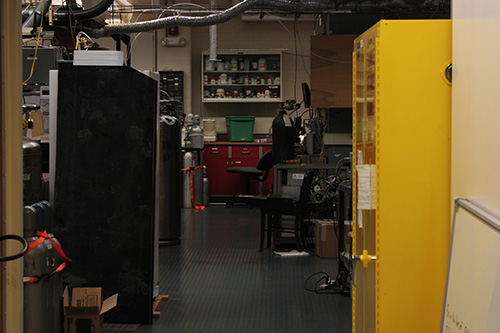
This piece is intended to portray the internal dialogue between our conscientious self-restraint and moral self-release. The straitlaced and utilitarian chair represents our conscience — the side of our personality amicable to an orderly society much like Dr. Jekyll. However, my idea is that this chair will be precariously built one such that it will require quite a balancing act on part of the sitter to remain upright. When the sitter fails to remain on the chair, it will immediately spiral into utter chaos. On the other hand, the sinister chair representing the Mr. Hyde of our personality consists of a restraint, built-in dildo, and an anti-religious symbol. The dildo and the symbol were chosen to represent moral turpitude within the context of Victorian society, when the novel was written. The restraint is there just as we constantly oppress our darker urges; yet despite this, this chair is more sturdy than the other. I chose the chemical engineering lab to reflect the setting of the novel, but I am reconsidering the setting to be less specific to the story.
Notes for improvement: make the normal chair more deliberately collapsable. Make weird chair completely stable. Make both chairs about the same size. Make weird chair look more sinister and less like a baby chair. Change groove sizes to fit better. Change setting.
“Fate” demonstrates the conversation between me and my fate.
These two identical chairs are tall, structured, and almost majestic to show the presence and power that fate has in my life. Because I have as much control over my fate as my fate has control over me, the two chairs are the same size. Both chairs have intricate engravings (which I will add more of) to signify the grandiose nature of a throne that fate may sit on. I have placed my chair in the musical performance room on the first floor of CFA, which I view to be a clean and official location. The dialogue between me and fate happens in a formal and strict environment (rather than a homey and comfortable one) and I wanted to display that by placing my chair in a more formal location.
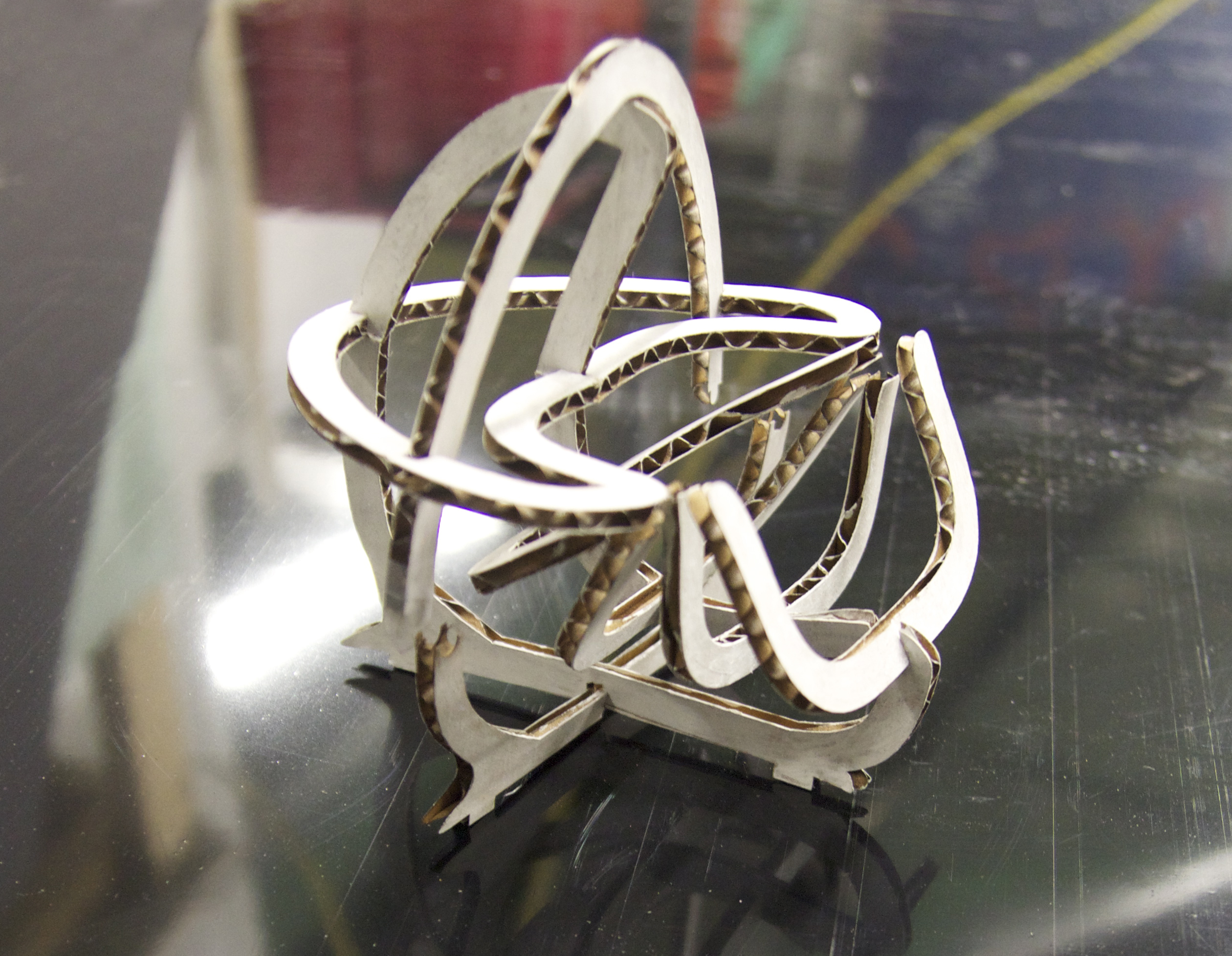
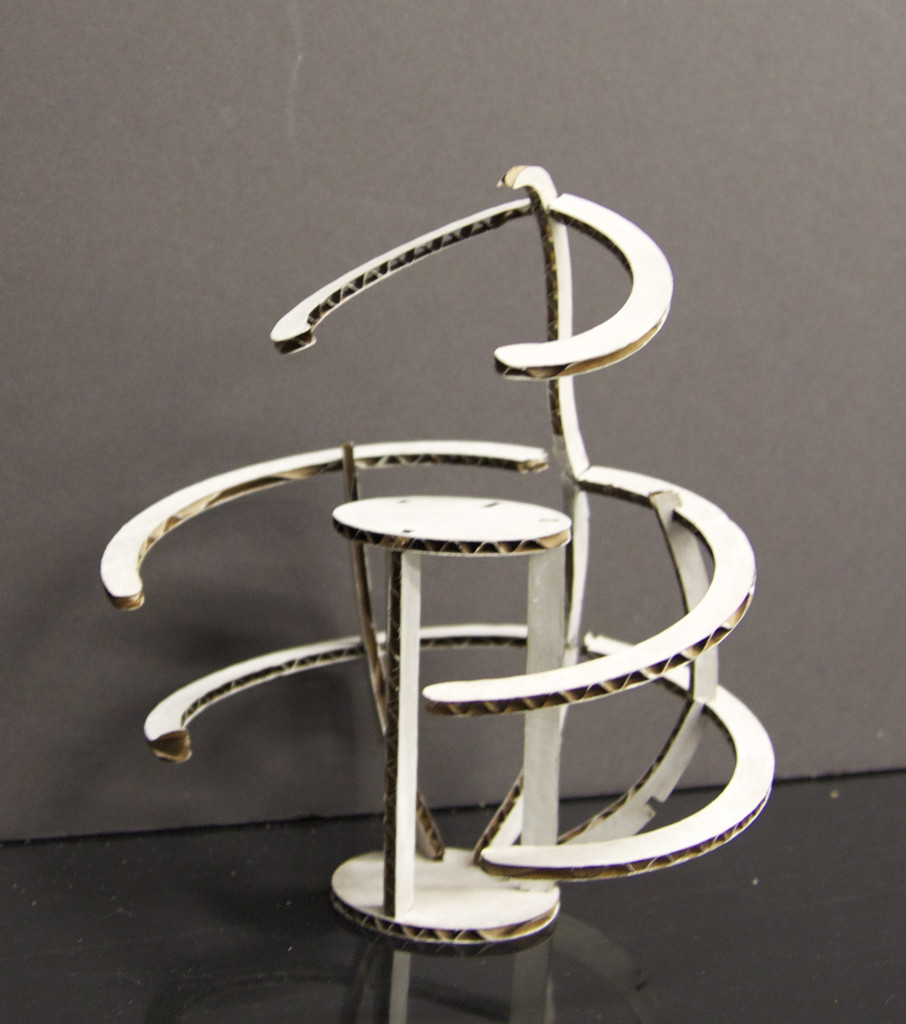
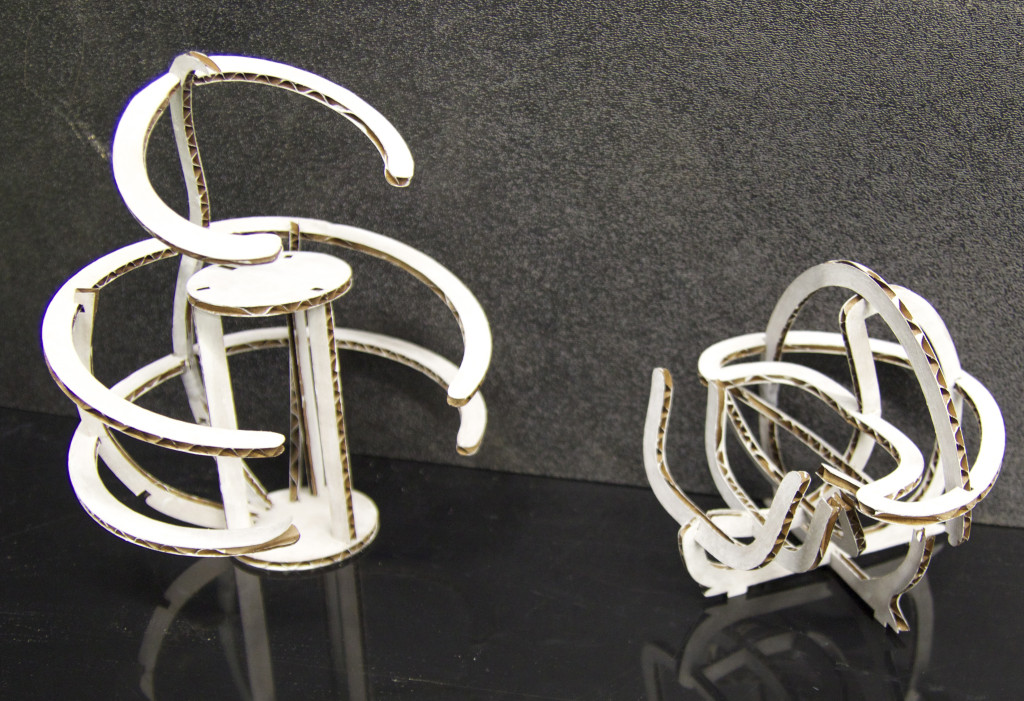
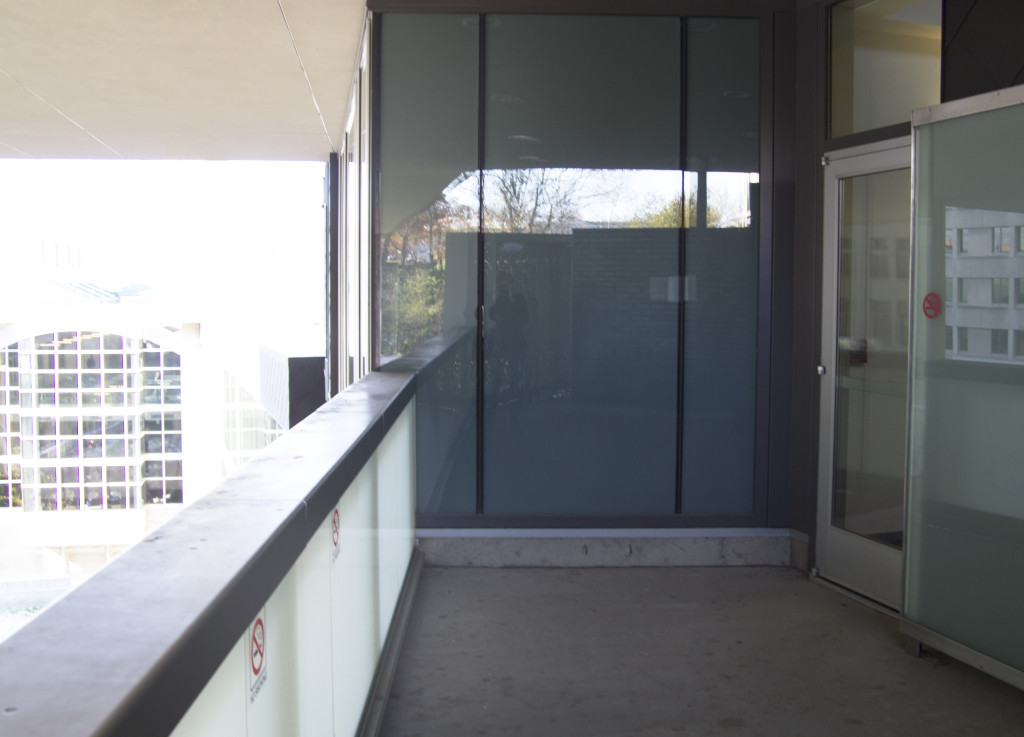
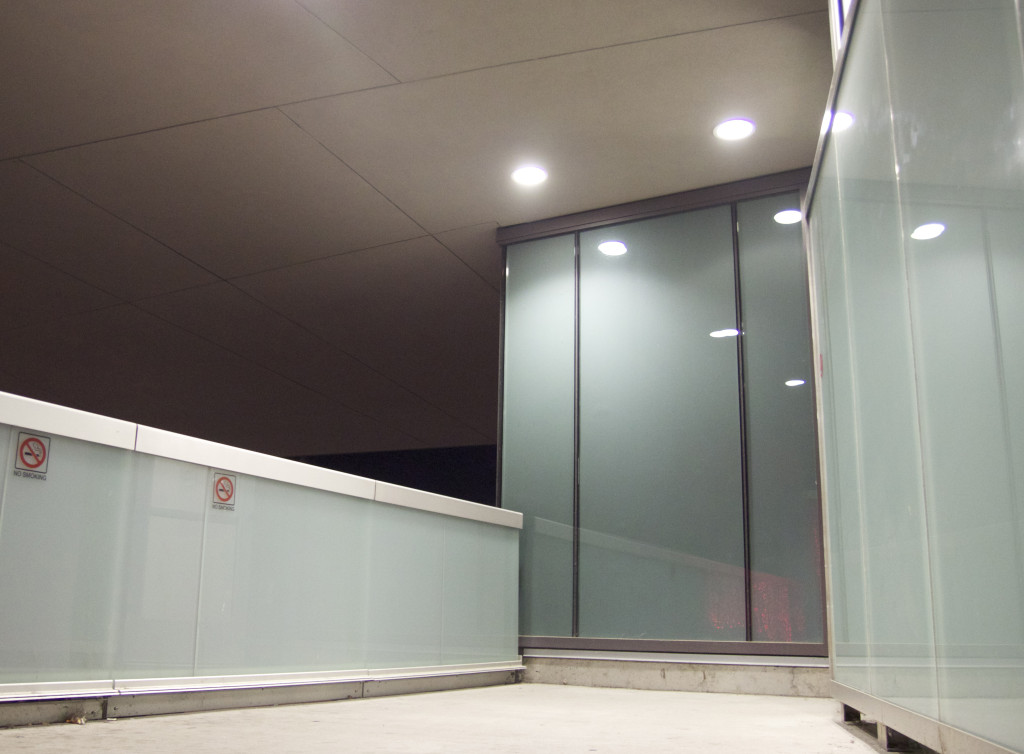
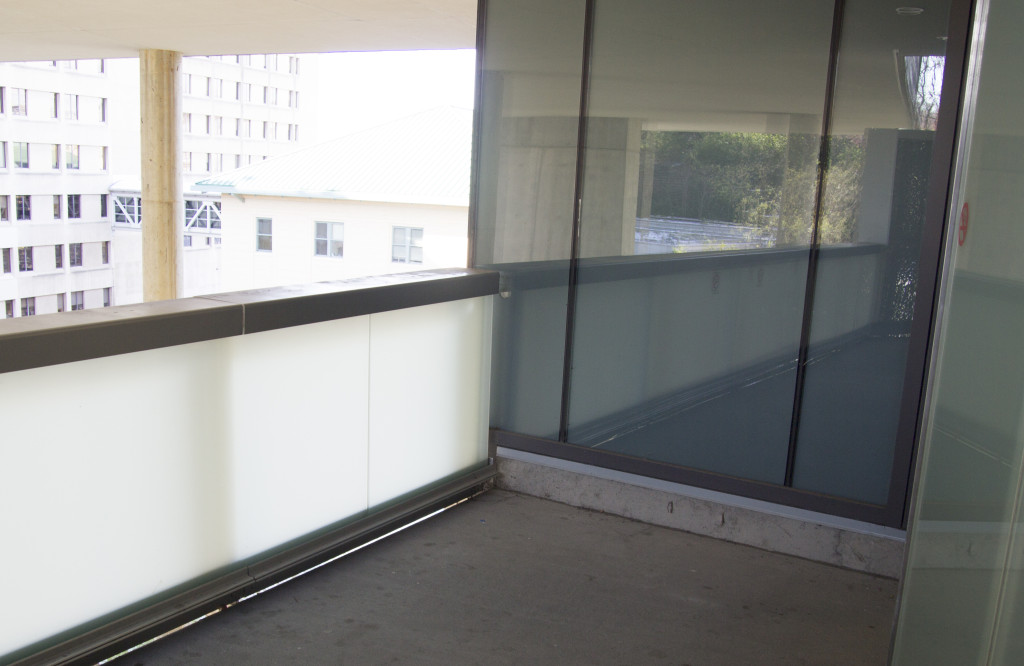
“Melting of the Minds” features a conversation between an erratic psychotic man bestowing wisdom upon his eight year old daughter. The designs for the chairs focused more on their underlying aspects and similarities as a family rather than their individual characteristics.
The young girl’s chair is painted white and shaped like an egg to represent her innocence and purity; while the father’s chair features more broken lines and elements of being, in a sense, cracked.
The location for this piece was chosen because of its clean and polished looking aesthetic. The surfaces of the walls were selected to highlight the clean lines of the chair as well as provide sort of a “sanitarium” feel.




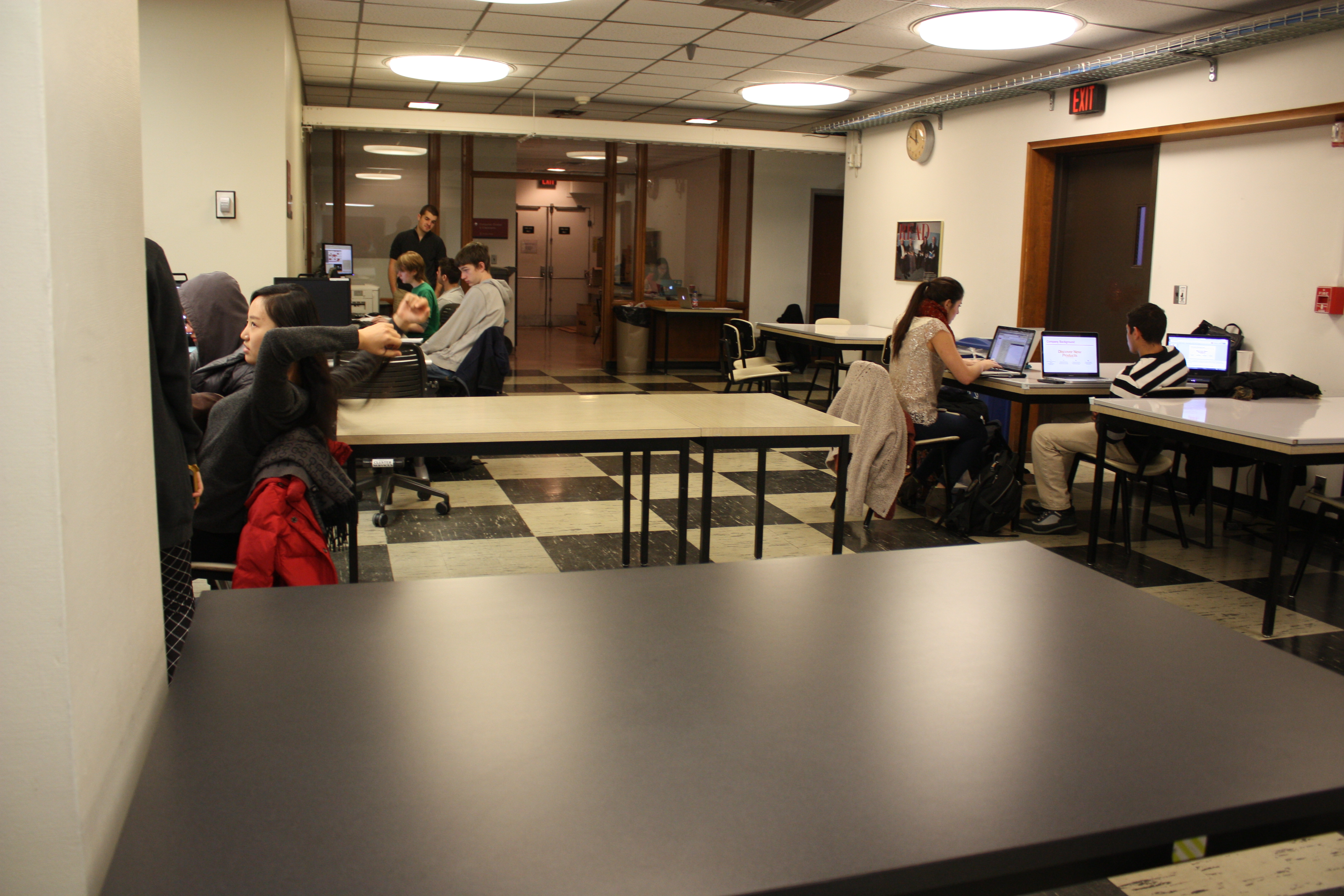

There is something inherently awkward about randomly assigned partnerships. Initially, when two students are tasked with working together on an assignment, they are equal. Tasks are fairly divided, and things seem to be going smoothly. But the inevitable happens, and slowly but surely the power dynamic between the two group members becomes more and more imbalanced. The dominant personality, the one with the greater drive, takes over. These two chairs seek to imitate this unbalanced relationship. By placing one chair at typical height, and the other at ground level and turned away, conversation between the people sitting there would become difficult and forced- the occupants could not possibly remain equals. Just by virtue of their positioning, the person in the higher chair would hold the power. And yet the chairs are structurally linked, so the partnership is kept intact despite the imbalance. Once these chairs are produced at their full scale, I intend to install them in the basement of Hunt library, in the workspaces where many groups complete their projects together.






These chairs and this location are the setting for a conversation between Albert Einstein and M. C. Escher on the subject of relativity and frames of reference. I have always loved Escher’s work, and been fascinated by special relativity, but I have only recently realized their connection. This piece reflects my own views on the many possible correct ways of looking at the world. Albert Einstein is famous for his equation e = mc^2, a description of the relation between mass and energy based on the constant speed of light in a vacuum, which is a prediction of his theory of special relativity. (It is important to note that the idea of general relativity, the fact that all inertial reference frames are equally valid, was introduces by Galileo, not Einstein.) M. C. Escher is well known for his drawings which play with relativity and multiple frames of reference, such as “Relativity” (the one with the staircases) and his tessellations, in which perspective can determine what forms are seen. To acknowledge both men’s creative accomplishments relating to relativity, my chairs are designed using the characters of Einstein’s equation in tessellating form, in which the E turned on its side is an M, there are two smaller Cs, two multiplication signs, and an equal sign. The colors are drawn from Escher’s typical tessellation color scheme of black, white, and red. The red is reserved for the two Es, as they coincide with the conversationalists’ last initials. E, M, and C also happen to be Escher’s full initials. The site is chosen for its directional ambiguity and for the fact that it is in Gates, a building infamous for its dearth of right angles, which are our culture’s favored source of referential frames.
My research included the book M. C. Escher: Visions of Symmetry by Doris Schattschneider, M. C. Escher by TASCHEN, and Einstein’s Dreams by Alex Lightman (and a thank you to Kaitlin for the referral).
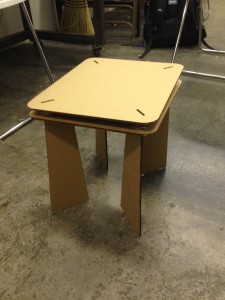
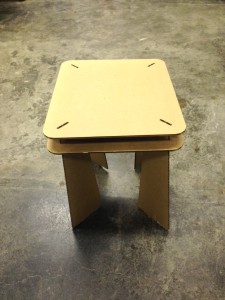
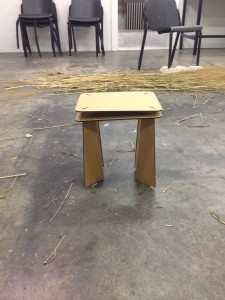 For this piece, one stool will be placed in a room. As a participant enters the room, I will tell them there are two stools in the room that they must find. One of the stools does not exist. From there on, I will track the movement of the participant throughout the environment. The piece contains several conversations, one of which being the conversation between the participant and the environment. Once I have gathered enough data, I will create a visual representation of participants’ interaction with the physical stool and the environment.
For this piece, one stool will be placed in a room. As a participant enters the room, I will tell them there are two stools in the room that they must find. One of the stools does not exist. From there on, I will track the movement of the participant throughout the environment. The piece contains several conversations, one of which being the conversation between the participant and the environment. Once I have gathered enough data, I will create a visual representation of participants’ interaction with the physical stool and the environment.






